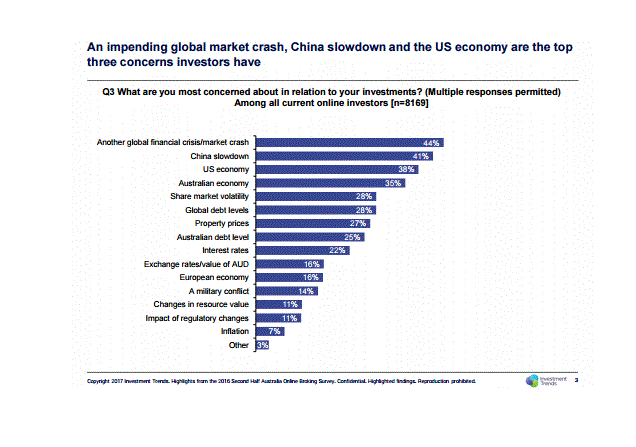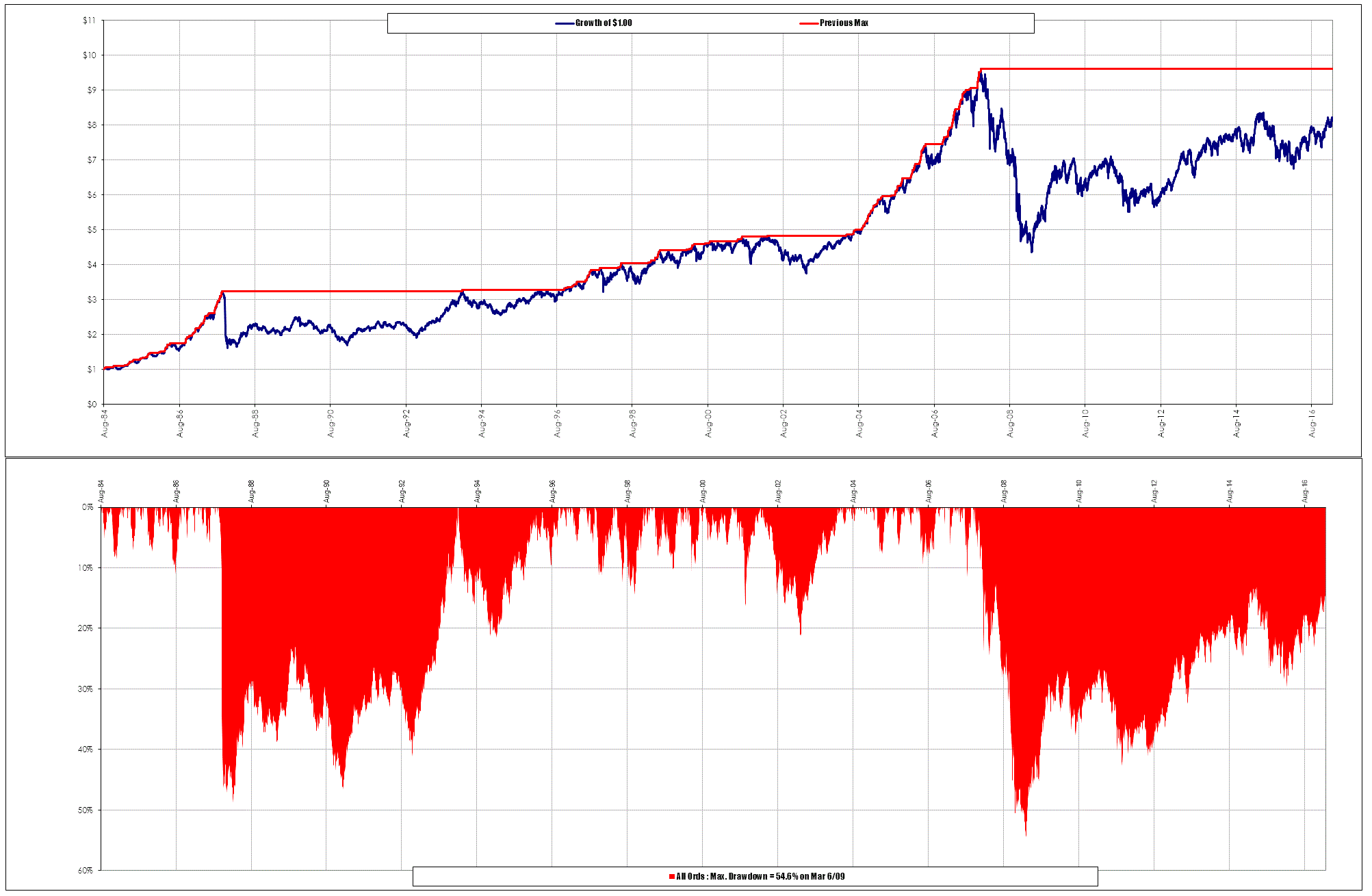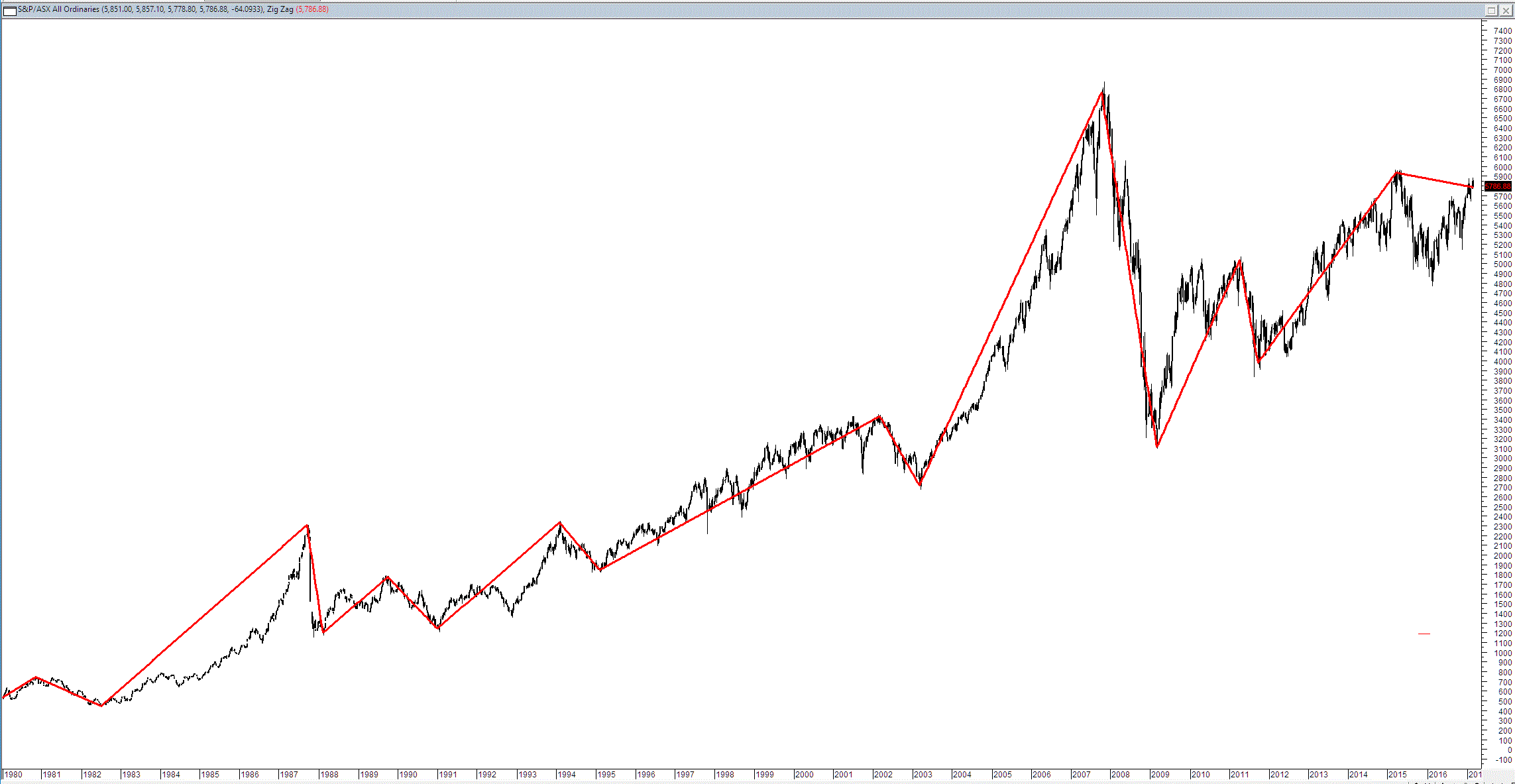I was reviewing the latest Investment Trends data which can be viewed here. There are a few things that jumped out at me but I want to discuss the chart I have posted below.
This chart looks at the current fears investors/traders have about the market. What is interesting about these fears is that as you would expect they are all events that investors cannot control and they are also largely irrelevant. Whilst I understand that fear is a default setting for many particularly within the echo chamber of both social media and mainstream news the fear of an impending crash is an irrelevant one. My view that it is irrelevant is because in part this is a perennial fear for investors that never comes true. In many ways it is akin to having a fear of sharks when you go to the beach.
These two charts look at what might be termed the equity curve for investing $1.00 in the All Ordinaries Index in 1984 and the underwater equity curve of this investment. A few things are apparent – markets do have periods of collapse although not as often as you would think. The market went almost two decades without a pullback of 20% or more. Indices always recover – note I said the index not that market. Your stocks might be completely stuffed but the index recovers due to its upward bias.Survivor bias can work in your favour of you hold and index ETF.
The number of times that the index has ended with a week on week 20% decline are surprisingly rare as can be seen below.
However, this style of data does little to assuage the nervousness of the irrational, even pointing out that simple systems exit the market in the initial stages of the market collapse offer little comfort. The conventional wisdom of the standard market participant is that they go to bed on Wednesday and wake up on Thursday and the market instantly collapses 30% on the open with no warning. This certainly was not my experience of the 1987 crash or the prelude to the GFC. In 1987 the market had actually peaked in September and the market became extremely unstable in the weeks before and had actually given up 10% and then gapped down before the crash. There was ample time and warning, the same is true of the GFC.
I perhaps shouldn’t be too hard on such market participants because the survey also notes that the majority of investors take their advice from market analysts.










Yes!